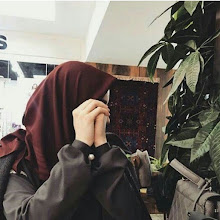Nature is a healer for those who know the importance of it, but nowadays few people truly appreciate its beauty and think in that way, the competition among the competitors have started a race among the folks, no one has got enough time to take a deep breath calm oneself down and look back and analyze the things, the search for peace has been misinterpreted because it is something you cannot attain by wishing and searching for it but by finding within yourself. Romantics answer this by connecting us within the source that is nature.
While discussing this particular age, it started in 1798-1830 and ended in 1832 when Walter Scott died. They were the influencers of the French Revolution, the Industrial Revolution, urbanization, civilization, realism, naturalism, mysticism, humanism, imaginations and many other major incidents that occurred during that era.
Romantics got popularity especially for the poetry that produced and caught the attention of readers as it did to myself. The suffering, hardships, sorrows, storms, barrenness, hollowness, through the use of natural imagery, is best portrayed by Romantics and as a result, increased their followers. Romantics clear illustration can be seen in Words Worth Poems like “The Thorn” and “The Old Beggar”, the corruption, hypocrisy, individualism, societal problems can be seen in both poems. Wordsworth has given a true picture and has created a connection between words and the world, the suffering of Maratha Ray in Thorn not only tells us about her journey but also how she healed herself, for her nature served as a protector, rejection from society does not bother her at all, but still, she is being noticed by people even though lacking interest in her surroundings but to her, it remained unnoticed because her inner was satisfied by taking a shield of nature. So, the comparison is drawn among society and the natural world through the use of natural imagery.
Another the well-known poet Coleridge; working with Wordsworth wrote Lyrical Ballads, also put his step forward and the poems that he wrote attained the readership, one of the famous Poems that leads him towards the peak was Kubla Khan passing through the centuries, it is as alive as it was before. The natural flow in his poems creates a visionary world within the reader’s mind, the dream is depicted in a real way, agreeing upon his philosophy because it is a way better than Words worth as he says your inner effects outer. Wordsworth and Coleridge appear to be two different points connecting with one bridge and that is the bridge of Nature. Even though the difference in their psychology is there but the focus is the same, that is the reason their worth cannot be denied, Subjectivity always remains that is the essence of human beings. And I appreciate this thing because it welcomes my thoughts in this as well.
Connection of Man with nature is not as much stronger as it was before, The Universe that it contains only recognized by those who have got natural spirit and vision. The natural scenery is lacking due to industrialization, village life that has been replaced by city life, natural scenery replacing artificiality, emotions with firmness, subjectivity with Objectivity, is opposite as it appears in Romantic area but when you read these poems you feel the same as portrayed and you appeal for the same beauty, as Keats adds, ‘’Truth is beauty and beauty is Truth’’. The main reason why I become the admirer of Romantics was their creativity that dragged and pushed me not to go anywhere.
The soul of a man is in Nature, the essence is impossible without your soul, to enlighten yourself, one has to go through sufferings and feel the subjectivity and come out of numbers, just like humans that do not lie in figures, the stillness of the heart is the stillness of the mind, chirping of a bird is not only a sound but an alarm to wake up from the dreams and make your return to your roots, as John Keats in his poem “The Nightingale” admires the song, and want to infuse and go within his world because to him it is soothing and serving as opium to his sufferings.
Imagination, fantasy, creativity, intuition has never betrayed a man at the same time, they act as a suggestion to seek out a right path because your Inner self is a universe that is connected with the Supreme power and by following your Intuition unknown paths uncover. And all these qualities have intrigued me as well.
Man the soul is connected with nature but Man has lost the soul but nature still contains that, by disconnecting departing ourselves with it, man is in state of lamentation, this scenario can be best seen in Wordsworth Poem ‘’ Lines written in Early Spring’’ in which he discusses man versus nature and what man has done to his self.
To see the sweetness and to realize it one has to see beyond the bounds imposed by our rational mind and which is what Romantics agree upon, the “Infinity”, the universe and boundary that a man searching for springs from his source. By connecting to our Core we can find anything that we are looking for. Man becomes alive in this way, by going back again to his Universe. So, by reading this genre, its poetry, we can sketch out and draw a contrast and can relate to ourselves.











